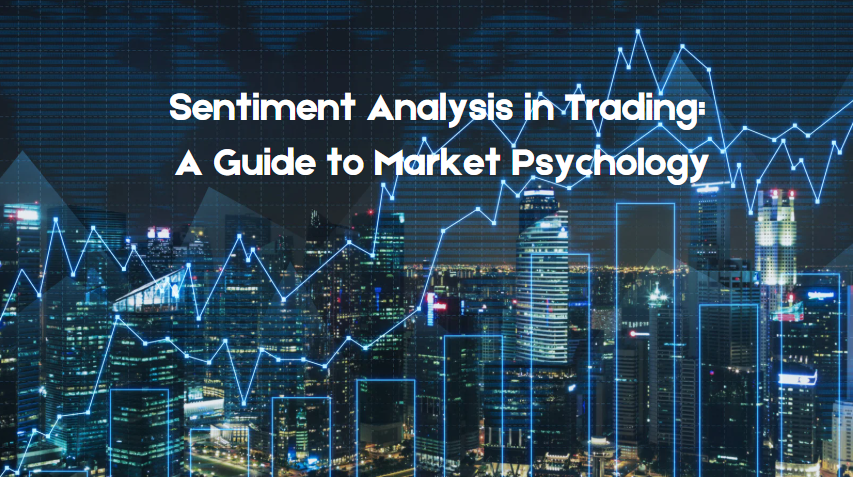
In the fast-paced world of financial markets, price movements are driven not just by economic data, but by human emotions—fear, greed, optimism, and panic. Sentiment analysis is the key to unlocking these psychological drivers, giving traders an edge in anticipating market shifts before they happen.
At Plexytrade, we empower traders with cutting-edge sentiment analysis tools, helping them decode market psychology and make smarter trading decisions. This comprehensive guide will cover:
- ✅ What sentiment analysis is & how it works
- ✅ Key sentiment indicators (VIX, Bullish Percent Index, Social Media Trends)
- ✅ How to combine sentiment with technical & fundamental analysis
- ✅ Real-world examples (Elon Musk’s tweets, GameStop short squeeze)
- ✅ Challenges & limitations of sentiment analysis
By the end, you’ll understand how to harness crowd psychology to refine your trading strategy.
🔍 What Is Sentiment Analysis?
Sentiment analysis is the process of measuring the collective mood of traders and investors to predict market movements. Instead of just analyzing price charts, it examines:
- ✔ News headlines
- ✔ Social media discussions (Twitter, Reddit, StockTwits)
- ✔ Financial blogs & forums
- ✔ Market positioning data (futures, options, COT reports)
🔄 How Does It Work?
Using Natural Language Processing (NLP) and machine learning, sentiment analysis tools scan millions of data points to determine whether the market is:
- Bullish (Optimistic) → Traders expect prices to rise
- Bearish (Pessimistic) → Traders expect prices to fall
- Neutral (Uncertain) → No clear bias
💡 Example: Elon Musk & Dogecoin
When Elon Musk tweeted “Dogecoin to the moon!”, sentiment spiked extremely bullish, causing a massive price surge. Traders who tracked this sentiment early could capitalize on the rally.
🚀 Why Is Sentiment Analysis Important?
1. Reveals Hidden Market Trends
Price charts show what is happening; sentiment explains why.
Example: If Bitcoin is rising but sentiment is overly euphoric, it may signal an impending correction.
2. Helps Spot Reversals Early
- Extreme bullishness = Possible top (time to sell)
- Extreme fear = Possible bottom (time to buy)
3. Complements Technical & Fundamental Analysis
- Technical Analysis: Studies price patterns
- Fundamental Analysis: Studies economic data
- Sentiment Analysis: Studies trader psychology
Best results come from combining all three!
📈 Top Sentiment Analysis Indicators
1. Volatility Index (VIX) – The “Fear Gauge”
- Measures expected market volatility (S&P 500 options).
- High VIX (>30) = Fear & potential market downturn
- Low VIX (<15) = Complacency & bullish market
2. Bullish Percent Index (BPI)
- Tracks the % of stocks in bullish technical patterns.
- BPI > 70% = Overbought (caution)
- BPI < 30% = Oversold (buying opportunity)
3. Put/Call Ratio (Options Sentiment)
- High Put/Call Ratio = Bearish sentiment (traders buying puts)
- Low Put/Call Ratio = Bullish sentiment (traders buying calls)
4. Social Media & News Sentiment Trackers
Tools like StockTwits, LunarCrush, and Bloomberg Terminal analyze Twitter, Reddit, and news sentiment in real time.
Example: GameStop (GME) short squeeze was fueled by Reddit’s WallStreetBets bullish sentiment.
5. Commitment of Traders (COT) Report
- Shows positioning of institutional traders in futures markets.
- If hedge funds are heavily short, retail traders might fade them (bet against them).
🛠️ How to Use Sentiment Analysis in Trading
1. Contrarian Trading (Fading the Crowd)
- When everyone is bullish → Consider selling
- When everyone is bearish → Consider buying
Example: In early 2020, COVID-19 panic drove extreme bearish sentiment.
Traders who bought when fear peaked profited from the rebound.
2. Confirmation for Technical Setups
If RSI shows oversold conditions + sentiment is extremely bearish, a reversal is more likely.
3. Event-Driven Trading (Earnings, Fed Meetings)
Track pre-event sentiment to gauge market expectations.
Example: If Apple (AAPL) earnings sentiment is overly optimistic, a “sell the news” reaction may occur.
⚠️ Challenges & Limitations
- ❌ False Signals – Not all sentiment shifts lead to price changes.
- ❌ Manipulation Risk – Fake news & pump-and-dump schemes distort sentiment.
- ❌ Lagging Data – By the time sentiment peaks, the move may already be over.
Solution: Always cross-verify with price action & fundamentals.
🏁 Conclusion: Master Sentiment Analysis with Plexytrade
Sentiment analysis is a game-changer for traders who want to anticipate market moves before they happen. By understanding crowd psychology, you can:
- ✅ Spot trend reversals early
- ✅ Avoid emotional trading mistakes
- ✅ Enhance your technical & fundamental strategies
Ready to start?
- 📌 Open a Plexytrade account (access sentiment tools & real-time data)
- 📌 Combine sentiment with technical analysis on MT4/MT5
- 📌 Trade smarter with the power of market psychology!
Join Plexytrade today and turn market sentiment into profits!
🚀 Sign up now & conquer the Forex market with Plexytrade.com!